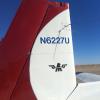Commercial Manuevers
-
Members Online
- Fritz1
- 1980Mooney
- TangoTango
- UteM20F
- Hank
- Schllc
- eman1200
- KSMooniac
- rklems
- Ivan
- BillyT0020
- midlifeflyer
- Bunti
- CCAS
- Reed Usrey
- mariosmt
- JeffMirs
- Parker_Woodruff
- IvanP
- PeterRus
- Matthew P
- EricJ
- mooney_flyer
- src223
- hazek
- NicholasM20
- chrisburdzy98
- mikechaf
- takair
- TCC
- LardLad
- Jeff Uphoff
- Skyland
- Kelpro999
- ta2too
- mooniac58
- buddy
- mike_elliott
- Rob K
- mluvara
- Mooneydreamr
- kris_adams
- Niko182
- Rmfriday
- redbaron1982
- 231MJ
- Trogdor


Recommended Posts